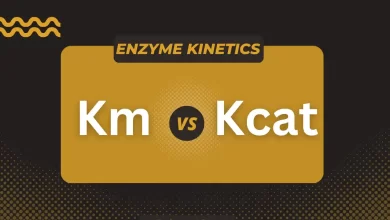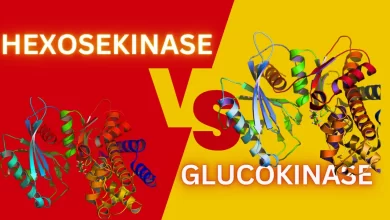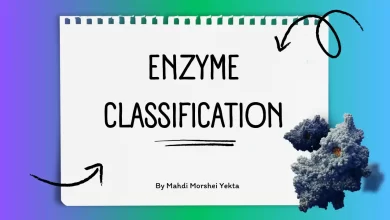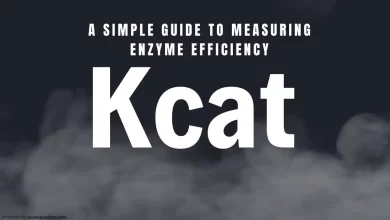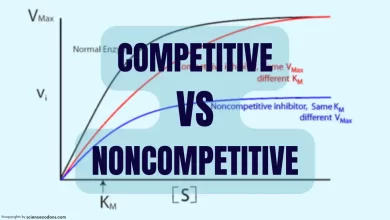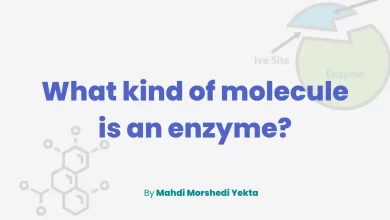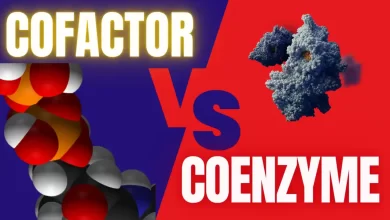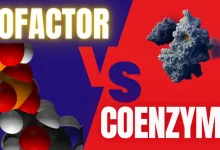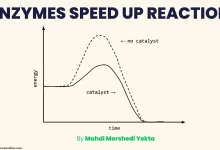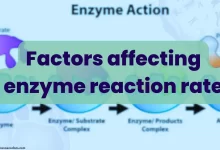To any agent that an enzyme needs for activity, it is called a cofactor. If the cofactor is an organic substance, it is called a coenzyme. Enzymes may be linked to the cofactor through a covalent or non-covalent bond. Enzymes linked to the cofactor by a covalent bond are called prosthetic groups.
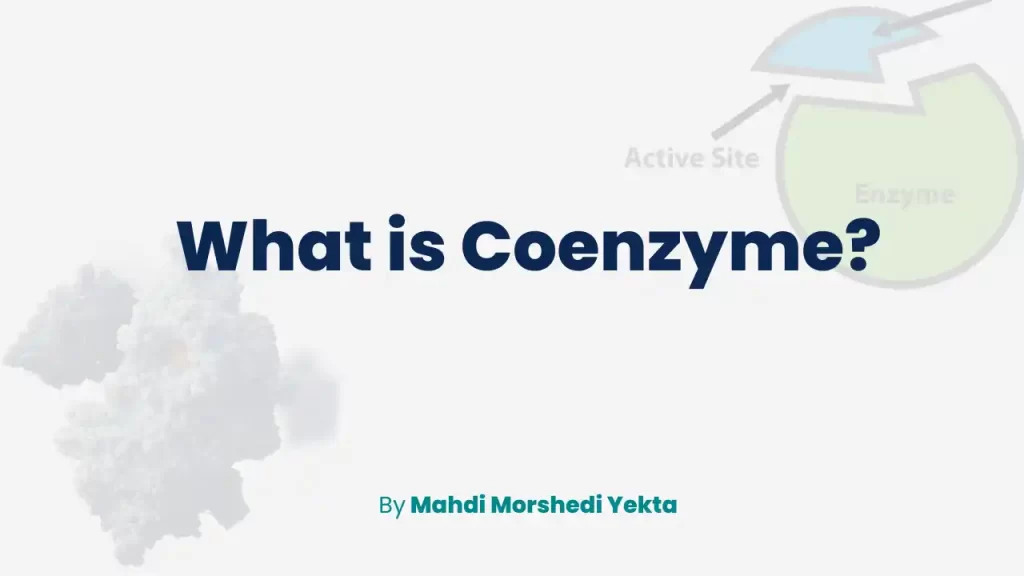
1- Vitamins and Coenzymes
Coenzymes derived from vitamins are generally derived from B vitamins and vitamin C. Thiamine pyrophosphate, CoA, NADP, NAD, FMN, FAD, Methylcobalamin, and pyridoxal phosphate are among the vitamins that are derived from B vitamins. Vitamin C itself acts as a coenzyme in many body reactions.
– Coenzymes derived from vitamins B
Water-soluble vitamins of group B play an important role in the production and synthesis of enzyme cofactors. Many vitamin cofactors are synthesized from B vitamins.
Thiamine pyrophosphate (TPP or ThPP)
Thiamine pyrophosphate (TPP) is synthesized from vitamin thiamine (B1). Enzymes that catalyze oxidative decarboxylation reactions require TPP for activity. The thiamine moiety has a thiazole ring. Thiazole is activated during the reaction and converted to a carbonyl. (read more about vitamin b1 deficiency diseases.)
Carbonyl can attack various compounds and cause their decarboxylation. Alpha-ketoglutarate dehydrogenase, pyruvate dehydrogenase complex, alpha-keto acid branched chain dehydrogenase, and transketolase require TPP for their activity.
Ribonucleofaloprotein coenzymes
FAD and FMN are synthesized from riboflavin. Riboflavin has an isoalloxazine ring that is linked to the sugar alcohol ribitol. The isoalloxazine ring in these enzymes can be reduced reversibly, so these enzymes participate in oxidation-reduction reactions. Enzymes that use these two types of coenzymes are identified as flavoproteins. If flavoprotein also requires a metal for its activity, it is called metalloflavoprotein. Citrate synthase, succinate dehydrogenase, and dihydrolipoamide dehydrogenase use FAD as a coenzyme. Xanthine oxidase, L-amino acid oxidase, and NADH dehydrogenase use FMN as a coenzyme.
Nicotinamide Coenzymes
Nicotinic acid is a derivative of pyridine. Two coenzymes, NAD and NADP, are synthesized from nicotinic acid (B3). The nicotinamide pyridine ring of NAD and NADP can be reduced reversibly, so these coenzymes participate in oxidation-reduction reactions. NAD coenzyme participates more in oxidative reactions and can enter the respiratory chain and produce ATP. Lactate dehydrogenase, pyruvate dehydrogenase, malate dehydrogenase, and glyceraldehyde 3-phosphate dehydrogenase use NAD as a coenzyme. NADP provides the necessary equivalents for synthesizing various substances, such as fatty acids. This coenzyme does not enter the respiratory chain.
Biotin
Biotin acts as a coenzyme in carboxylation reactions. A carboxylate ion is first attached to N-biotin, and an intermediate compound called carboxybiotin is created to perform carboxylation. Carboxybiotin then transfers the carboxylate group to the desired protein.
Coenzyme A
Coenzyme A (CoA) has a thiol group attached to acyl groups. This coenzyme acts as a carrier of acyl groups in the body.
Pyridoxal phosphate (PLP)
Pyridoxal phosphate (PLP) is synthesized from vitamin B6. This coenzyme participates in transamination and non-oxidative decarboxylation reactions. The aldehyde group of this coenzyme forms a Schiff base with the amino acid amino group.
Tetrahydrofolate (TH4)
Tetrahydrofolate (TH4) is a molecule composed of pteridine base, aminobenzoic acid (PABA), and glutamic acid. TH4 can carry an activated one-carbon unit in various ways. TH4 can be converted to N10, N5-methyl H4 folate by receiving a carbon source from serine (the primary source of one-carbon units) through reduction to N5-methyl H4 folate, which participates in the conversion of homocysteine to methionine.
Methylcobalamin and deoxy-Adenosylcobalamin
Methylcobalamin and deoxy-Adenosylcobalamin are forms of Vitamin B12 that contain a corrin ring and can be converted into the coenzymes Methylcobalamin and deoxy-Adenosylcobalamin. Methylcobalamin is involved in converting homocysteine to methionine and methyl tetrahydrofolate to tetrahydrofolate. Daxi Adenosylcobalamin is involved in the conversion of methylmalonyl CoA to succinyl CoA.
| Vitamin | Coenzyme | Role |
|---|---|---|
| B1 (Thiamine) | Thiamine pyrophosphate (TPP) | Involved in the oxidative decarboxylation of pyruvate, \uD835\uDEFC-keto acids, and transketolase reactions |
| B2 (Riboflavin) | Flavin mononucleotide (FMN) | Participates in electron transfer reactions in carbohydrate, lipid, purine, and amino acid metabolism |
| B2 (Riboflavin) | Flavin adenine dinucleotide (FAD) | Participates in electron transfer reactions in carbohydrate, lipid, purine, and amino acid metabolism |
| B3 (Niacin) | Nicotinamide adenine dinucleotide (NAD) | Acts as an electron carrier in oxidation-reduction reactions in glycolysis, Krebs cycle, and fatty acid oxidation |
| B3 (Niacin) | Nicotinamide adenine dinucleotide phosphate (NADP) | Acts as an electron carrier in oxidation-reduction reactions in the pentose phosphate pathway, fatty acid synthesis, and cholesterol synthesis |
| B5 (Pantothenic acid) | Coenzyme A (CoA) | Carries acyl groups in fatty acid synthesis and degradation, Krebs cycle, and amino acid metabolism |
| B6 (Pyridoxine) | Pyridoxal phosphate (PALP) | Acts as a coenzyme for various enzymes involved in amino acid metabolism, such as transamination, decarboxylation, and racemization |
| B7 (Biotin) | Biocytin | Acts as a coenzyme for carboxylases that catalyze the addition of CO2 to various substrates |
| B9 (Folic acid) | Tetrahydrofolic acid (THFA) | Transfers one-carbon units in nucleotide synthesis, amino acid metabolism, and methylation reactions |
| B12 (Cobalamin) | Deoxyadenosyl cobalamin | Acts as a coenzyme for enzymes that catalyze the rearrangement of carbon skeletons, such as methylmalonyl-CoA mutase |
| B12 (Cobalamin) | Methylcobalamin | Acts as a coenzyme for methionine synthase, which transfers a methyl group from N5-methyl-THFA to homocysteine to form methionine |
– Vitamin C
Vitamin C acts as a reducing agent. Many enzymes require vitamin C as a coenzyme for their activity. Here is a table of enzymes that require vitamin C as a coenzyme:
| Enzyme | Function |
|---|---|
| Prolyl hydroxylase | Hydroxylation of proline residues in collagen |
| Lysyl hydroxylase | Hydroxylation of lysine residues in collagen |
| Dopamine beta-hydroxylase | Conversion of dopamine to norepinephrine |
| Peptidylglycine alpha-amidating monooxygenase | Amidation of peptide hormones |
| Tryptophan hydroxylase | Conversion of tryptophan to serotonin |
2- Metabolic coenzymes
Some coenzymes in the body are not derived from vitamins. These coenzymes may be derived from amino acid derivatives or have a peptide structure. The most important of these coenzymes are listed in the table.
| Metabolic coenzymes | Function |
|---|---|
| S- Adenosylmethionine | methionine group donor |
| PAPS | Transfer of sulfate group |
| Glutathione | electron donor |
| Tetrahydrobiopterin | Electron transfer |
| Ubiquitin | Electron transfer |
| Lipoamide | The transferor of Acyl groups |
Reference:
brenda-enzymes.org/oldstart.php
